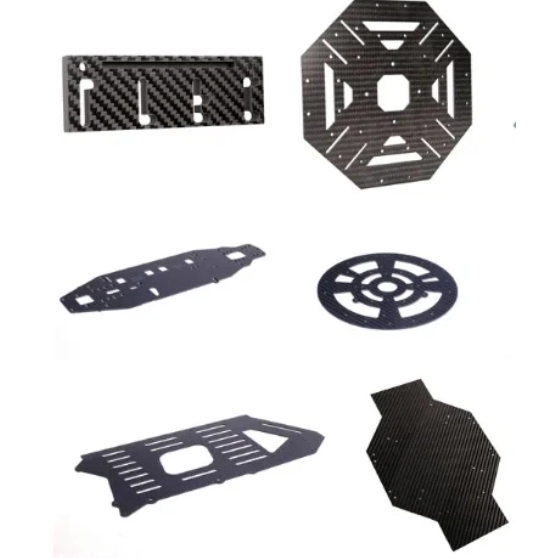In the development of modern medical technology, breakthroughs in materials science have often been a key driver of innovation. Carbon fiber – a new type of material formed by carbonizing and graphitizing organic fibers – is triggering a lightweight revolution in the medical field with its unique physical and chemical properties.
The medical value of carbon fiber first stems from its excellent material properties. Its strength is 5 times that of steel, while its density is only 1/4 of that of steel. This high-strength and lightweight characteristic enables medical equipment to achieve a breakthrough of “reducing weight and increasing efficiency”. More importantly, carbon fiber has excellent biocompatibility, does not cause rejection reactions when implanted into the human body, and at the same time, it does not interfere with medical images such as X-rays and nuclear magnetic resonance. These properties make it an ideal medical material.
In the field of rehabilitation engineering, the application of carbon fiber has completely changed the design concept of prosthetics and orthoses. Traditional prosthetics mostly use metal materials, which are heavy and have poor flexibility, and long-term wearing can easily cause limb fatigue in patients. Carbon fiber prosthetics, through bionic structural design, reduce weight by more than 40% and can simulate the natural movement trajectory of human joints. For example, carbon fiber lower leg prosthetics adopt a hollow tubular structure, which not only ensures bearing strength but also generates appropriate elasticity when walking, making the gait of amputees closer to that of normal people. Carbon fiber orthoses used by patients with scoliosis not only weigh half of traditional plastic orthoses but also their breathable grid structure can reduce skin stuffiness, significantly improving wearing comfort.
The innovation of surgical instruments is also inseparable from the help of carbon fiber. Carbon fiber retractors used in neurosurgical operations can accurately expose the surgical field while minimizing compression on brain tissue. The carbon fiber guide plate for orthopedic surgery, utilizing its radiopacity, can perform X-ray fluoroscopy during the operation without being removed, greatly improving the accuracy of surgical positioning. The carbon fiber handle of laparoscopic surgical instruments reduces the hand fatigue of doctors during continuous operation by more than 30% by reducing the weight of the operating end.
Medical imaging equipment is another important field where carbon fiber exerts its unique advantages. The carbon fiber panel of the CT examination bed is only 5 millimeters thick but can bear a weight of 200 kilograms. Its attenuation rate of X-rays is less than 10%, effectively reducing image artifacts. The carbon fiber radio frequency coil bracket in nuclear magnetic resonance equipment not only avoids the interference of metal materials on the magnetic field but also reduces the energy consumption of equipment operation through lightweight design. In the field of radiotherapy, carbon fiber treatment beds combined with dynamic tracking systems can achieve sub-millimeter positioning accuracy, ensuring that radiation accurately focuses on tumor tissues.
Explorations in the field of artificial organs further demonstrate the potential of carbon fiber. In heart valve replacement surgery, carbon fiber – reinforced biological valves have a service life 2 – 3 times longer than traditional valves; artificial blood vessels use a carbon fiber braided skeleton composite biofilm material, which not only ensures structural strength but also promotes the growth of vascular endothelial cells. The latest research shows that surface – modified carbon fiber stents can guide the orderly growth of osteoblasts in bone defect repair, and their healing speed is 30% faster than that of traditional metal stents.
Despite the broad application prospects, carbon fiber medical products still face challenges. The high cost caused by high – precision processing technology and the mass production problems of complex – shaped products restrict their popularization and application. However, with the combination of 3D printing technology and carbon fiber composites, the production cost of personalized medical devices has begun to decline. In the future, improving the antibacterial properties of carbon fiber through nano – coating technology, or developing intelligent prosthetics that can monitor pressure by combining with intelligent materials, will further expand its application boundaries.
From helping disabled people regain the ability to walk to assisting doctors in performing precise surgeries, carbon fiber, with its “both rigid and flexible” characteristics, is redefining the performance boundaries of medical equipment. This material revolution not only improves medical effects but also enhances patients’ quality of life in details, making technology truly a solid carrier of humanitarianism.

